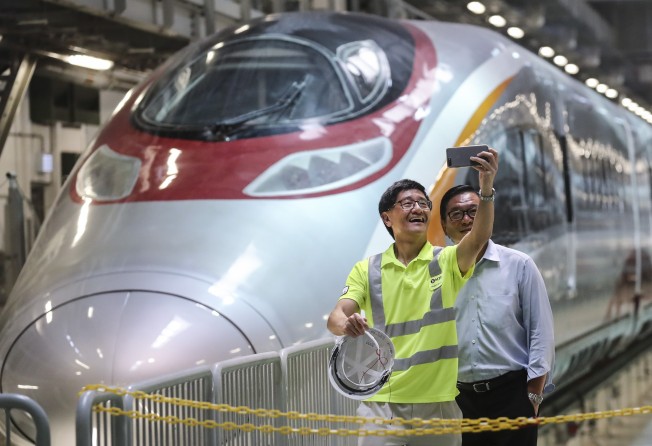If the MTR can pay big bucks, why aren’t we getting the best top management?
- MTR CEOs don’t come cheap, but Hong Kong doesn’t seem to be getting its money’s worth of leadership. Amid scandals, the MTR Corp has also been chasing new projects around the world and neglecting its duty of public service at home

When Lincoln Leong Kwok-kuen took up his role as chief executive of the MTR Corporation in 2015, there was an article in the Post about how hard he worked. But they do say it is better to work smart than to work hard.
Fast-forward to 2019, and the government has asked him to fall on his sword after a litany of engineering and public relations disasters, and paid him HK$11.8 million as a golden handshake. The company’s annual report reveals that the MTR’s top four officials were paid a total of HK$31.1 million in 2018.
That’s pocket money if you include benefits like handsome pension contributions, a chauffeured company car and generous business travel allowances. Why, Leong was probably even entitled to free travel on the MTR!
I am not pious about how much people get paid – few could compete with Canning Fok Kin-ning of CK Hutchinson, with his pay packet of over HK$200 million a year, but he has been proving his worth for decades. The question remains: if these compensation budgets are available to the MTR Corp, why aren’t we getting the very best?
The MTR is a 40-year success story. The system consists of more than 230km of railway and 91 stations, carrying 5.5 million passengers a day with 99.9 per cent punctuality. Almost all of the network is built in extremely challenging ground conditions. I should know; I used to be an MTR engineering geologist. In the old days (the MTR Corp and I go way back to 1978), leading-edge technology and talent were brought in from all around the world.
The case of the cut steel rebar in the structure of Hung Hom station sounds like a schoolboy error, which could become a serious safety issue. That’s not the professional MTR I remember. The interim report of the commission of inquiry into the scandal notes that the MTR Corp’s use of technology in quality checks on site has “fallen behind the curve”.
The MTR Corp manages itself for its own convenience not ours. In a city that never sleeps, the MTR goes to bed early – not long after midnight. It’s lights out, too, at the Airport Express, never mind the final flurry of delayed flights unloading thousands of exhausted, bleary-eyed passengers.
The MTR’s role is to provide cheap and efficient public transport for the people of Hong Kong, instead of maximising revenue from commuters much poorer than Leong. Thanks to government-sanctioned high fares and sweetheart property deals, the MTR Corp made a breathtaking net profit of HK$16 billion in 2018. And they can’t run a train overnight. Meanwhile, London and New York run (possibly loss-making) trains through the night and schedule maintenance around the services.
It is ultimately the Hong Kong government’s fault because it has taken the shareholder’s arm’s-length approach for too long. The 21 non-boat-rockers on the MTR Corp’s board have an average age of 65.6 – nice retirement job if you can get it. The board members include politicians, civil servants, bankers and serial board members, few of whom know anything about signal systems.
The world of management is populated by finance and accounting types who know the price of everything and the value of nothing. As a result, the MTR Corp has been chasing new projects around the world, while neglecting its duty of public service at home.
Although chief executives have come and gone (Leong succeeded Jay Walder, who left prematurely following government pressure), the new CEO, Jacob Kam Chak-pui, is a long-time senior employee whose head has not rolled after the string of scandals.
Still, at least the MTR has rehired one foreign specialist. Roger Bayliss, a 61-year-old engineer, spent 12 years with the MTR Corp before working for British airport operator BAA and leading Swedish construction group Skanska.
As projects director, Bayliss is making less than HK$5 million a year, about 17 per cent less than his predecessor Philco Wong. It rankles slightly that we don’t have to pay top dollar for the best.
Hong Kong is a small city of just 7.4 million. That’s a pool of maybe 1.5 million professional people to staff banks, property firms, hotels, airlines, the government and the MTR. Global training makes for better decision-making and breeds confidence in leadership. Executives are exposed to internal and external politics, which is useful if you are running a public transport company in a free society where things can and do go wrong.
It should no longer be jobs for the boys. We can afford the best global talent for our public services – and, it seems, at a discount.
Richard Harris is chief executive of Port Shelter Investment, and is a veteran investment manager, banker, writer and broadcaster, and financial expert witness